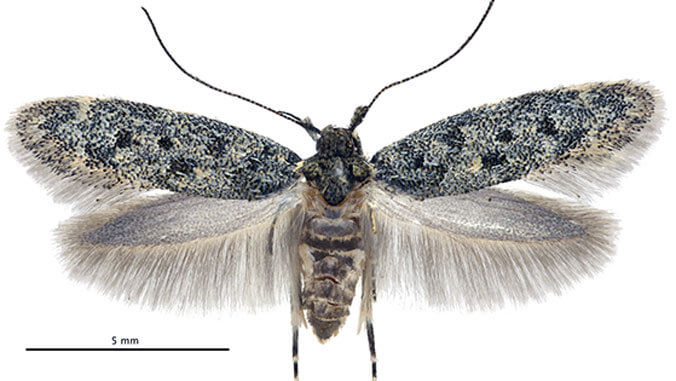
University of Hawaiʻi at Mānoa researchers discovered five new endemic moth species during a survey of the Kamehamenui Forest Reserve on Maui in order to get a baseline biodiversity estimate prior to reforestation efforts. The survey was a collaboration between the College of Tropical Agriculture and Human Resources (CTAHR) and the Hawaiʻi Department of Land and Natural Resources (DLNR).
Entomologist Dan Rubinoff of CTAHR’s Department of Plant and Environmental Sciences, along with his grad students Camiel Doorenweerd and Kyhl Austin, discovered the moth species, all in Hyposmocoma, a remarkable genus of Hawaiian moths found nowhere else.
One of the new species was also found all the way at the peak of Haleakalā (at 3,045 meters), which they named Hyposmocoma kukilakila in tribute to the magnificent volcano. Two other species were named after Lance Da Silva of DLNR, which funded DNA results that led to the discoveries, and Kim Starr, who worked with the DLNR team that actively supported this research.
“We estimate about 50% of Hawaiʻi’s insect diversity is yet undiscovered and unnamed, and we know even less of how these species are part of the intricate and diverse Hawaiian ecosystems that are unique in the world,”said Rubinoff.
Naming undescribed species opens the door to gathering knowledge on the species, including what they eat, what eats them, their behavior and evolution, he explained. Understanding their position in the ecosystem can be used to set conservation priorities to try to prevent the extinction of the incredible diversity of insects that is unique to Hawaiʻi. Healthy ecosystems are the basis to any sustainable practice of agriculture, use of water, or any other use of natural resources.
“There is still hope for Hawaiian insects, but if we do nothing, we can expect hundreds of species going extinct in the coming decades without us ever even knowing they existed,” Rubinoff said. “The establishment of forest reserves and reforestation efforts offer hope for the preservation of Hawaiian insects.”
Visit Rubinoff Lab to learn more.

